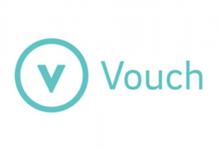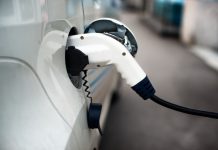
At NerdWallet, we adhere to strict standards of editorial integrity that will help you make decisions with confidence. Many or all of the products featured here are from your partners. Here’s the way we make money.
So, you’re ready to buy a car. You have done your research, sold your old car and found the perfect set of wheels. Now you’re wondering how much of a payment in advance to make. Most people you may well ask say 20%, and that’s?usually right.
In general, it makes sense to make a deposit with a minimum of 20% on that new car – if you’re able to afford it. If you cannot hit 20%, get as near as you possibly can. It will increase your chances of getting a loan on favorable terms, keep the monthly obligations low and make it less likely that you will end up “upside down,” or owing a lot more than the vehicle is worth.
Twenty percent seems high, right? Many people do buy a car with less. The average new-car buyer put down just $3,502 in 2014, about 11% from the average new car price of $33,000. Used-car buyers put down less. Six grand for any deposit may go through just like a hefty chunk of change, so why shell out?
There are lots of reasons:
- You could get better terms in your loan, together with a lower rate of interest.
- You’ll increase your chances of getting approved for a loan.
- The monthly payment is going to be lower, and you’ll pay less in total interest within the lifetime of the loan.
- You’ll have more equity in a car, upping your sense of ownership.
- It helps you avoid owing your lender a lot more than the vehicle is worth or even more than you’d receive from insurance when the car is totaled.
- A higher upfront payment will help keep your overall debt level manageable – but keep market conditions in mind.
Lower interest rate
A substantial down payment signals to lenders that you are dedicated to the vehicle and therefore represent a lower-risk borrower, so some lenders provides you with a much better rate of interest.
Better chance of loan approval
If your credit rating is less than excellent, a sizable deposit will help you qualify for financing. “Keep in mind that buyers don’t necessarily need all the money in cash. Two common methods to bolster the down payment are having a trade-in vehicle or with a cash rebate on the vehicle’s purchase,” says Brian Moody, executive editor at Autotrader. In case your FICO score is 670 or below, you will have a better possibility of getting a loan from the bank if you’re able to put at least 15% down, according to the auto website Edmunds.com.
Lower monthly payments
More money down means less to pay for each month, and fewer interest paid over the lifetime of the borrowed funds. “If you cannot secure low financing for whatever reason, creating a bigger deposit – or buying the car outright – can save you significant money in financing costs,” says Jason Allan, managing editor for Kelley Blue Book’s KBB.com. You should check out how the down payment will affect your monthly obligations with an car loan calculator.
More equity
The more you place down, the greater equity you’ll have. One good reason for the 20% benchmark: It comes down to exactly what a new car loses in value through depreciation in a year. “Depreciation is all about 20.5% within the newbie, so a 20% down payment essentially offsets the first year of depreciation,” says Ron Montoya, senior consumer advice editor at Edmunds.com.
Avoid being ‘upside down’ on your loan
If you make?not big enough a payment in advance on the car, you could wind up owing more than the vehicle is worth. A serious example: No doubt you’ve seen dealerships advertising zero-down deals. While these deals are popular, they may be risky.
With a 100%-financed deal, you’d owe a lot more than the value of the car, because the loan would come with the value plus sales tax, interest along with other fees. “If you put zero down, right off the bat the vehicle is already worth under the loan that you have removed,” Montoya says.
That’s called being “upside down” or “under water,” and it is financially dangerous. If you’re inverted, you may not be able to exchange the car if you wish to buy a new one, or else you may have to roll the amount you still owe into the loan for that new car. If you are in an accident as well as your car is totaled, the insurance company’s payment – that is in line with the cash value of the car – may not cover the full amount you still owe.
Keep?debt level manageable?- but consider market conditions
One final factor: Is it cheap or expensive to borrow money at this time? When interest rates are high, you want to scrape up all of the cash it is possible to to maintain your loan (and also the amount spent on interest) as small as possible.
But when interest rates are low, because they have been for several years, a smaller down payment could make sense. “When minute rates are low, even if you have money available to pay cash for the vehicle, the best choice may still be to take out financing. That allows you to keep your money, perhaps invested having a higher rate of return,” says Mike Buckingham, senior director of the automotive financial practice at J.D. Power.
If place your money to operate and produce extra income from the investment, a smaller down payment might be appropriate.
[More: Can You Save Thousands of Dollars by Buying a brand new Car with a Loan Rather than Cash?]
The bottom line
When it comes to car deposit, bigger is usually better. While many people put down less and do fine, the very best strategy is to put down 20% or more if you’re able to afford it. Which will bring you plenty of financial benefits of enjoy during your many years of car ownership.
Jeanne Lee is a staff writer at NerdWallet, a personal finance website. Email: [email protected].
Image via iStock.














